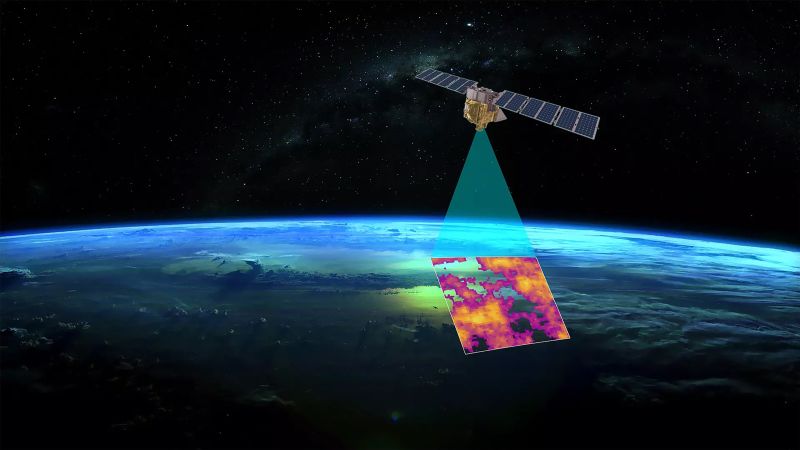High Above Earth, a Satellite is Hunting for Methane Leaks, Revealing the Scale of the Problem
A cutting-edge satellite, MethaneSAT, is orbiting the planet, diligently hunting for leaks of methane, a super-polluting gas that is warming the planet at an alarming rate. The satellite’s precise measurements are providing heatmaps of the largest offenders, revealing areas venting the gas into the atmosphere at an astonishing rate, unbeknown to regulators.
Early findings indicate that the oil and gas industry is releasing methane at a rate three to five times higher than what the Environmental Protection Agency has estimated, and significantly more than what the industry itself agreed to in 2023. The Permian Basin, one of the most productive oil and gas basins in the world, is leaking 9 to 14.5 times the industry-set limit, while the Appalachia Basin is leaking at four times the rate.
In Utah’s Uinta Basin, the leak rate is a staggering 45 times the industry-set limit. Despite producing less oil and gas, the older, leakier equipment means it is leaking more overall.
“This is just very, very revealing,” said Ritesh Gautam, lead senior scientist on MethaneSAT, adding that the data is precise and extraordinary. “The images we started to see were just extraordinary in terms of the overall precision of the data.”
Methane pollution has long been underestimated and not well-understood, yet natural gas, which is up to 90% methane, is rising as a fossil fuel of choice to generate electricity. Methane traps about 80 times more heat than carbon dioxide in its first 20 years in the atmosphere, making it a pressing problem.
The satellite’s early reports have been startling, revealing that nearly half a million wells producing 6 to 7% of US oil and gas generate roughly 50% of the industry’s methane pollution. The leaks “might be hard to individually detect, but they all add up,” Gautam said. “In aggregate, there are thousands and thousands across these basins.”
The problem is severe in the South Caspian Basin in Turkmenistan, one of the planet’s largest methane hotspots, which is pumping out methane at 1.5 times the rate of the Permian Basin.
Scientists are confident in MethaneSAT’s readings, as they align with previous studies. The findings have significant implications for efforts to curb climate change, with methane mitigation being a crucial step. However, experts note that the ultimate solution remains the transition to renewable energy sources and the phase-out of fossil fuels.

